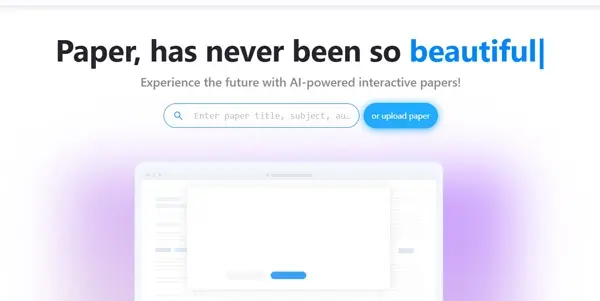OpenRead

An AI-based tool that extracts, summarizes and analyzes any academic document or scientific paper
OpenRead: An AI-Powered Tool for Academic Document Analysis
OpenRead is a free, AI-based tool designed to streamline the process of extracting, summarizing, and analyzing academic documents and scientific papers. It offers a powerful solution for researchers, students, and educators seeking to efficiently manage and understand complex information from scholarly sources.
What OpenRead Does
OpenRead leverages advanced artificial intelligence algorithms to process academic papers and other scholarly materials. Its core functionality centers around three key actions:
Extraction: OpenRead meticulously extracts key information from documents, including abstract, introduction, methodology, results, discussion, and conclusion sections. This structured extraction saves significant time compared to manual reading and note-taking.
Summarization: It generates concise and accurate summaries of the entire document or specific sections. This allows users to quickly grasp the main points and arguments without having to read the entire text.
Analysis: While the specifics of its analytical capabilities aren't fully detailed publicly, it implies the ability to identify key themes, concepts, and arguments within the document, aiding in a deeper comprehension of the research presented.
Main Features and Benefits
- Time Savings: Significantly reduces the time spent reading and processing large volumes of academic literature.
- Improved Comprehension: Provides clear and concise summaries, facilitating a better understanding of complex research.
- Enhanced Research Efficiency: Enables researchers to quickly identify relevant papers and extract key findings.
- Accessibility: The free access makes it a valuable resource for students and researchers with limited budgets.
- Structured Data Extraction: Organizes key information into easily digestible sections.
- Potential for Keyword & Topic Identification: (Inferred from the description) This facilitates targeted searching and exploration of specific research areas.
Use Cases and Applications
OpenRead finds practical applications in numerous settings:
- Students: Quickly grasp the core concepts of assigned readings, prepare for exams, and write effective literature reviews.
- Researchers: Efficiently screen large numbers of papers, extract relevant data, and stay updated on the latest research in their field.
- Educators: Save time grading papers and provide students with concise summaries of complex texts.
- Librarians: Assist patrons in quickly identifying relevant research materials.
- Journalists and Writers: Summarize complex scientific findings for a wider audience.
Comparison to Similar Tools
While a detailed comparison requires testing against specific competitors, OpenRead distinguishes itself potentially through its free access. Many similar tools offer comparable features but often require paid subscriptions. Tools like [mention specific competitors, e.g., SciTLDR, Semantic Scholar] may offer more advanced analytical features or integrations with other research platforms, but OpenRead provides a readily available, no-cost alternative for basic needs. The key differentiator will be the depth and accuracy of its summarization and analytical capabilities relative to its paid competitors.
Pricing Information
OpenRead is currently offered completely free of charge. This makes it a highly accessible and valuable resource for individuals and institutions with budgetary constraints.
Conclusion
OpenRead presents a compelling solution for anyone working with academic documents. Its focus on extraction, summarization, and analysis, combined with its free accessibility, positions it as a valuable tool for improving research efficiency and comprehension across various fields. Further investigation into its analytical capabilities and a comparison to other tools in the market will determine its ultimate position in the landscape of academic AI tools.